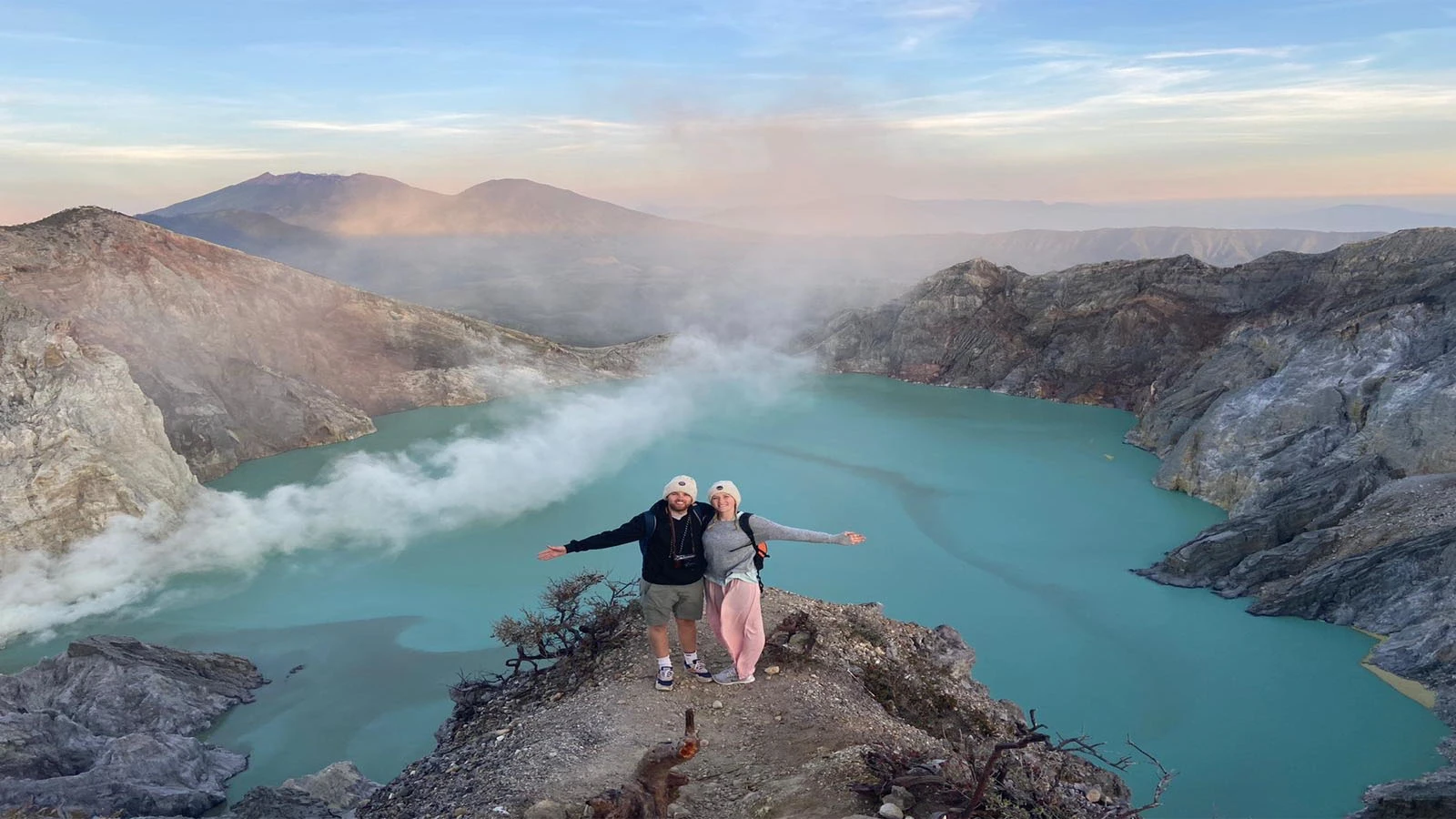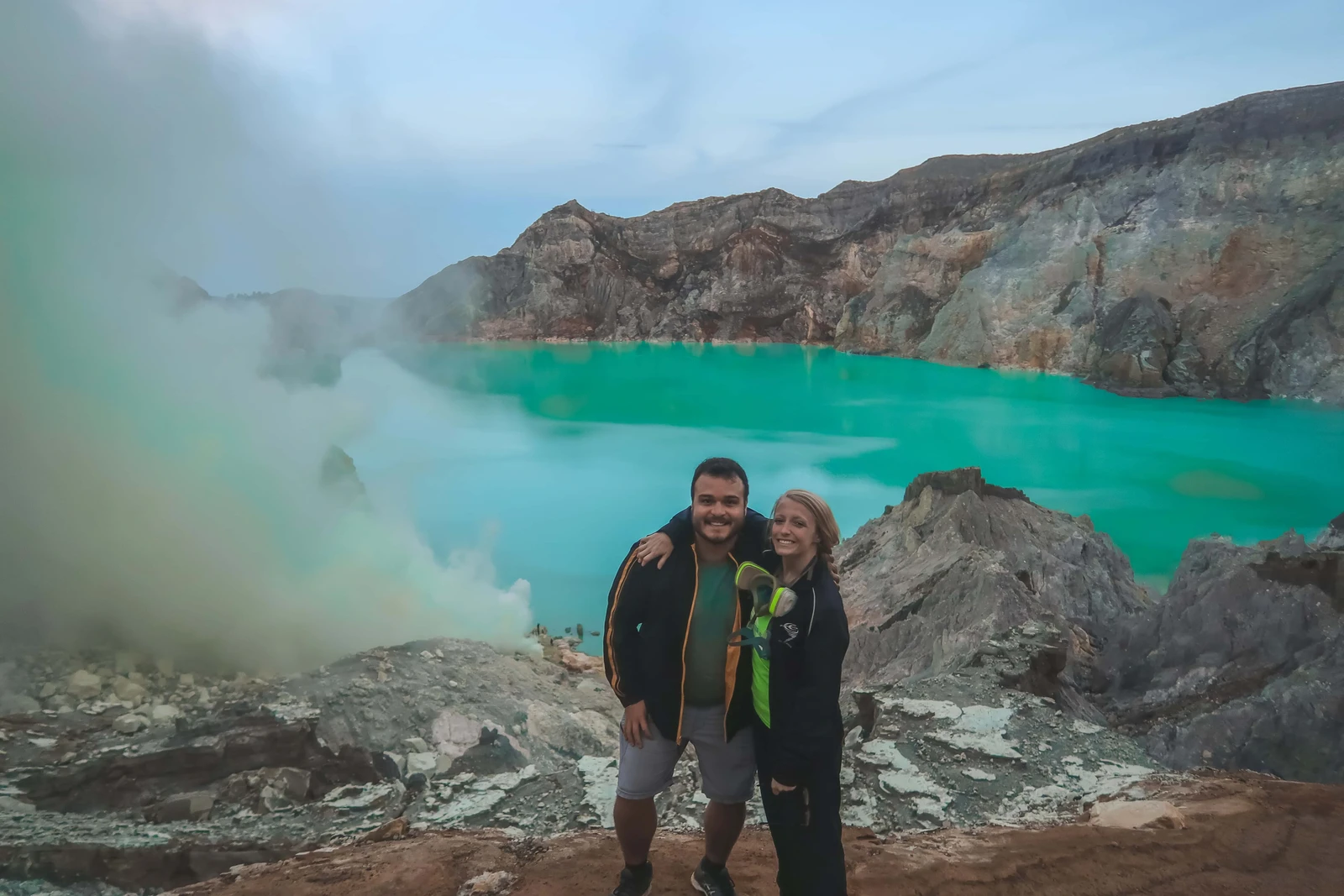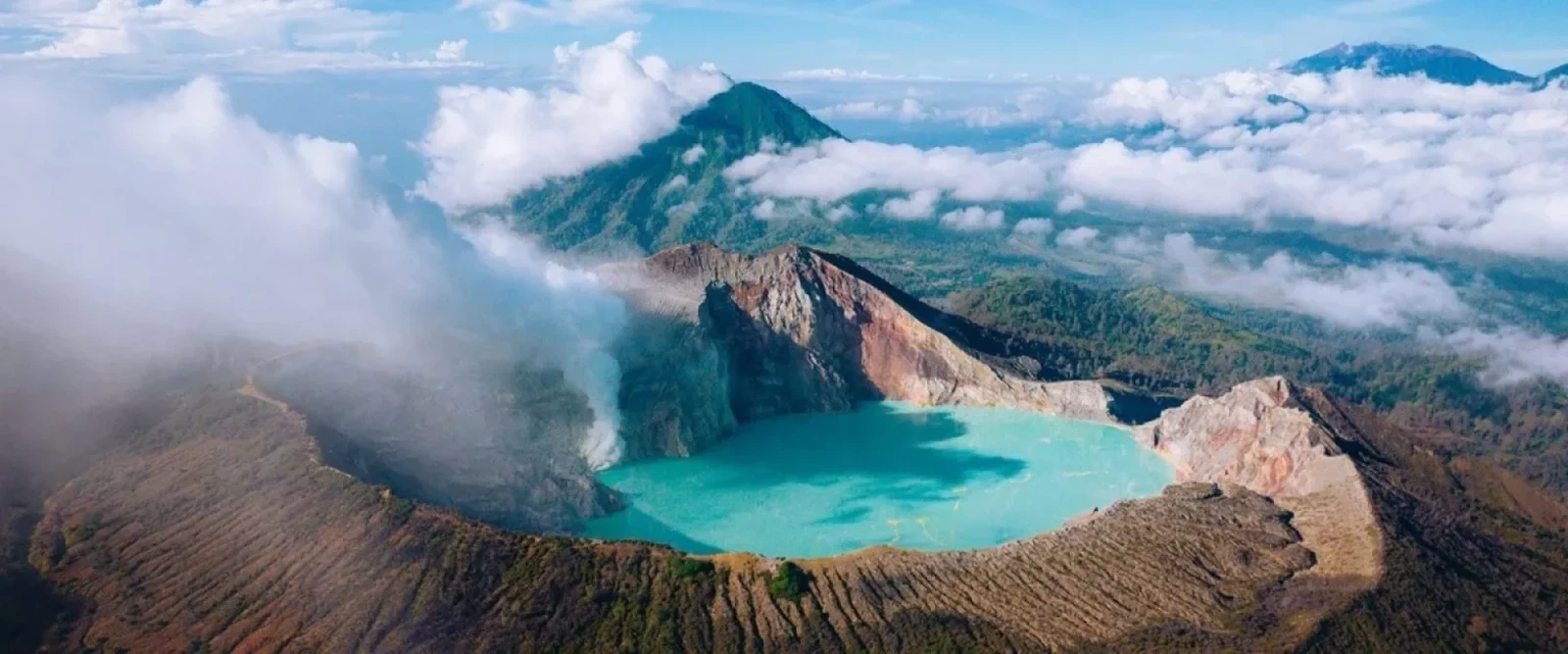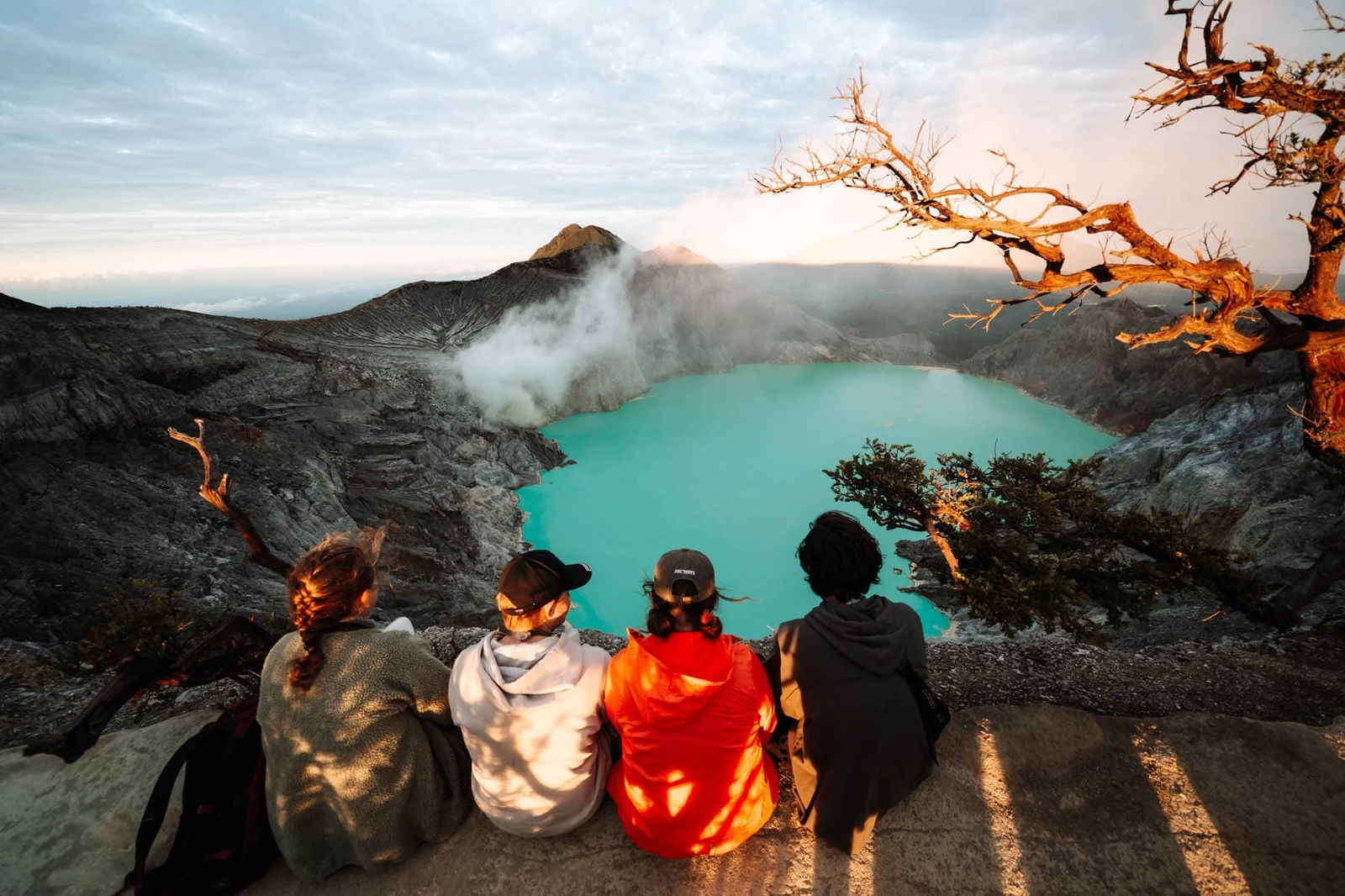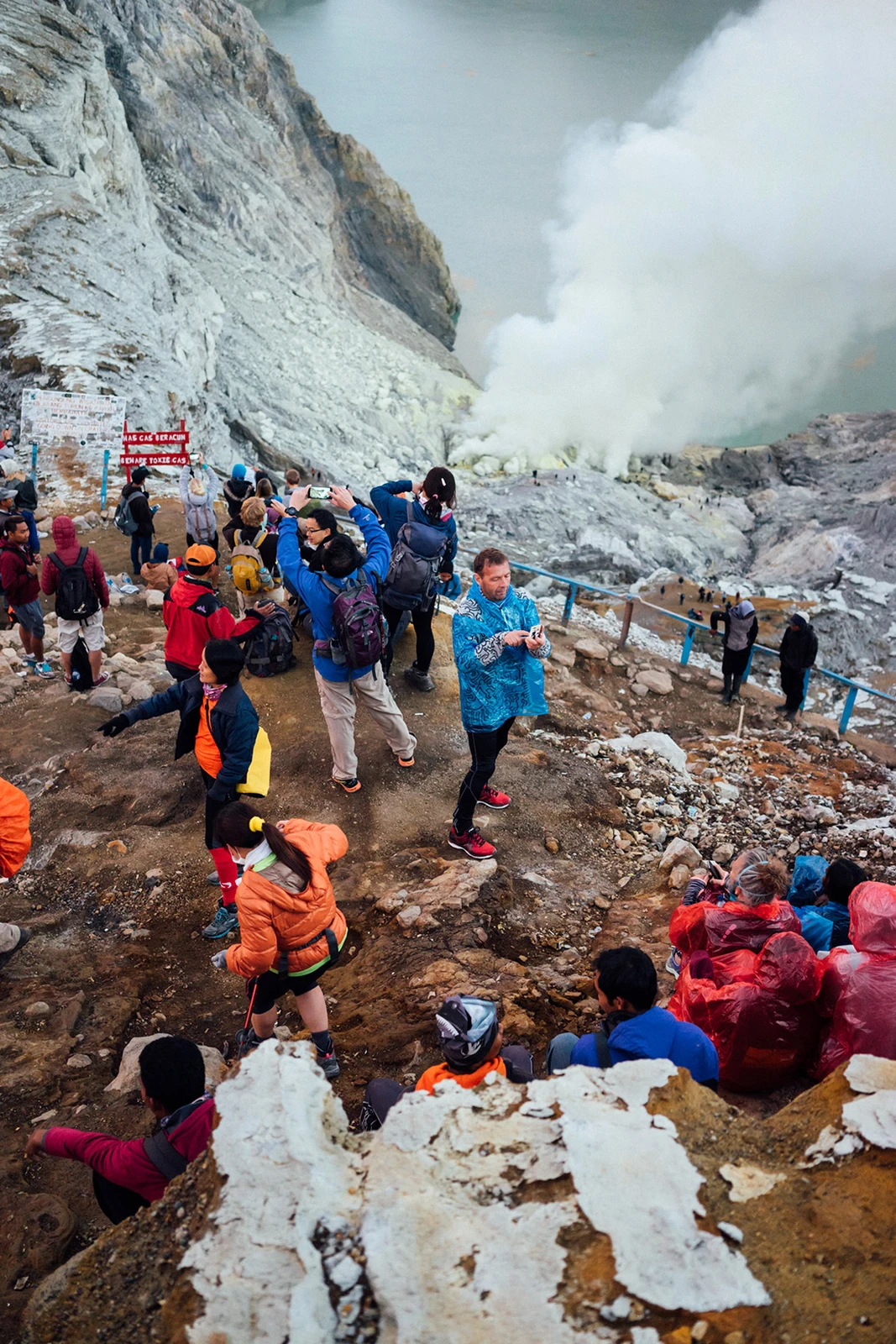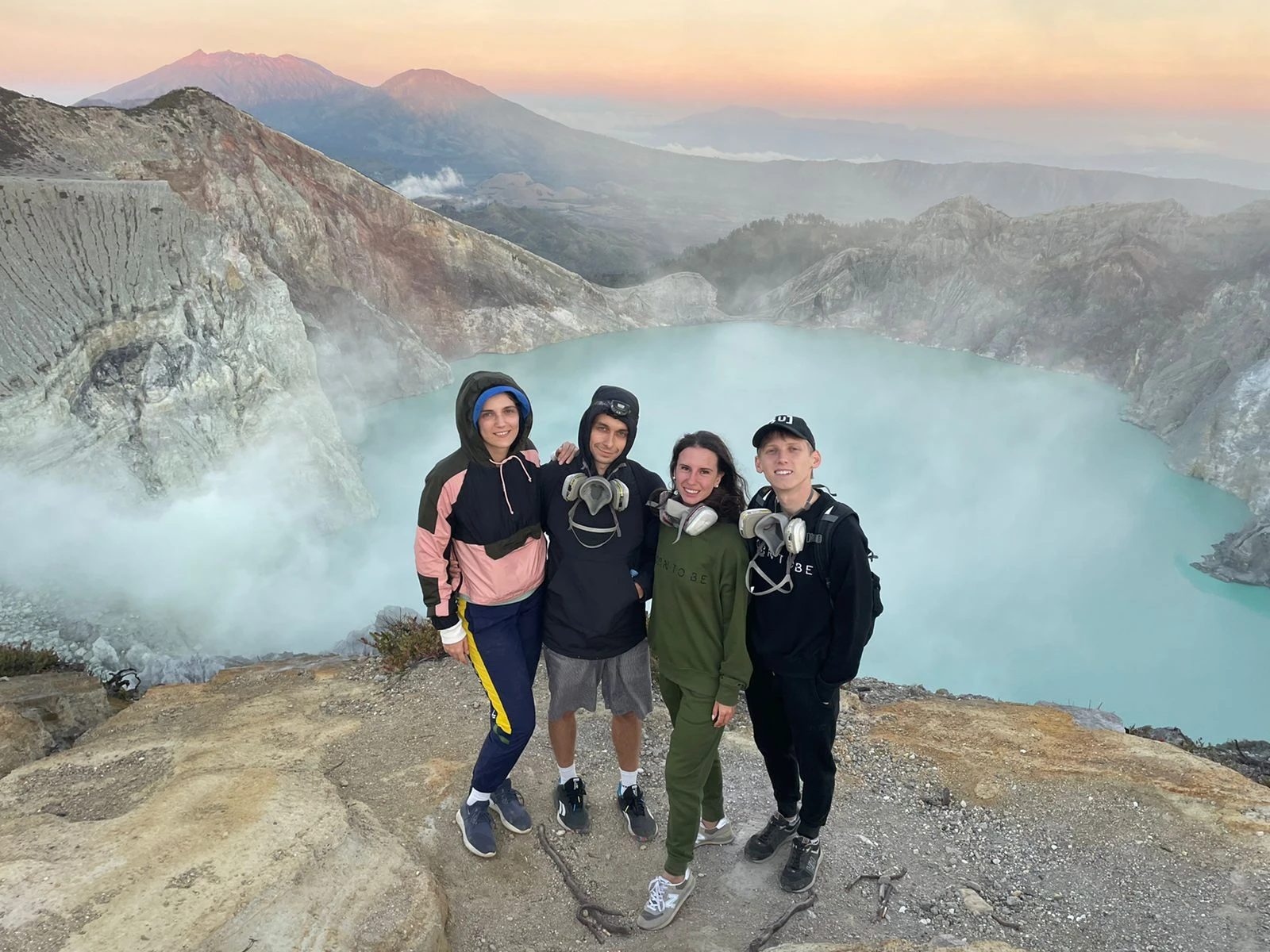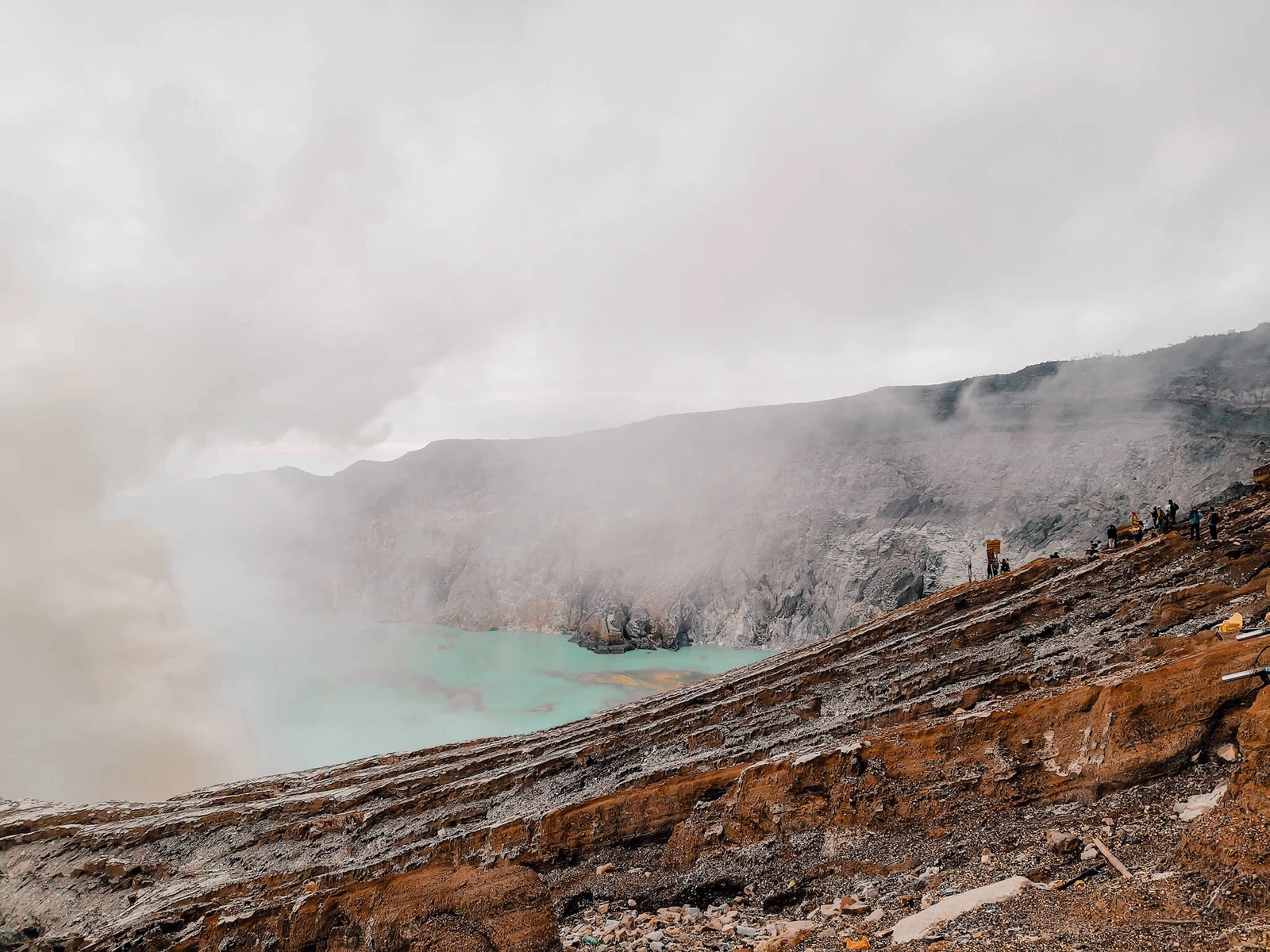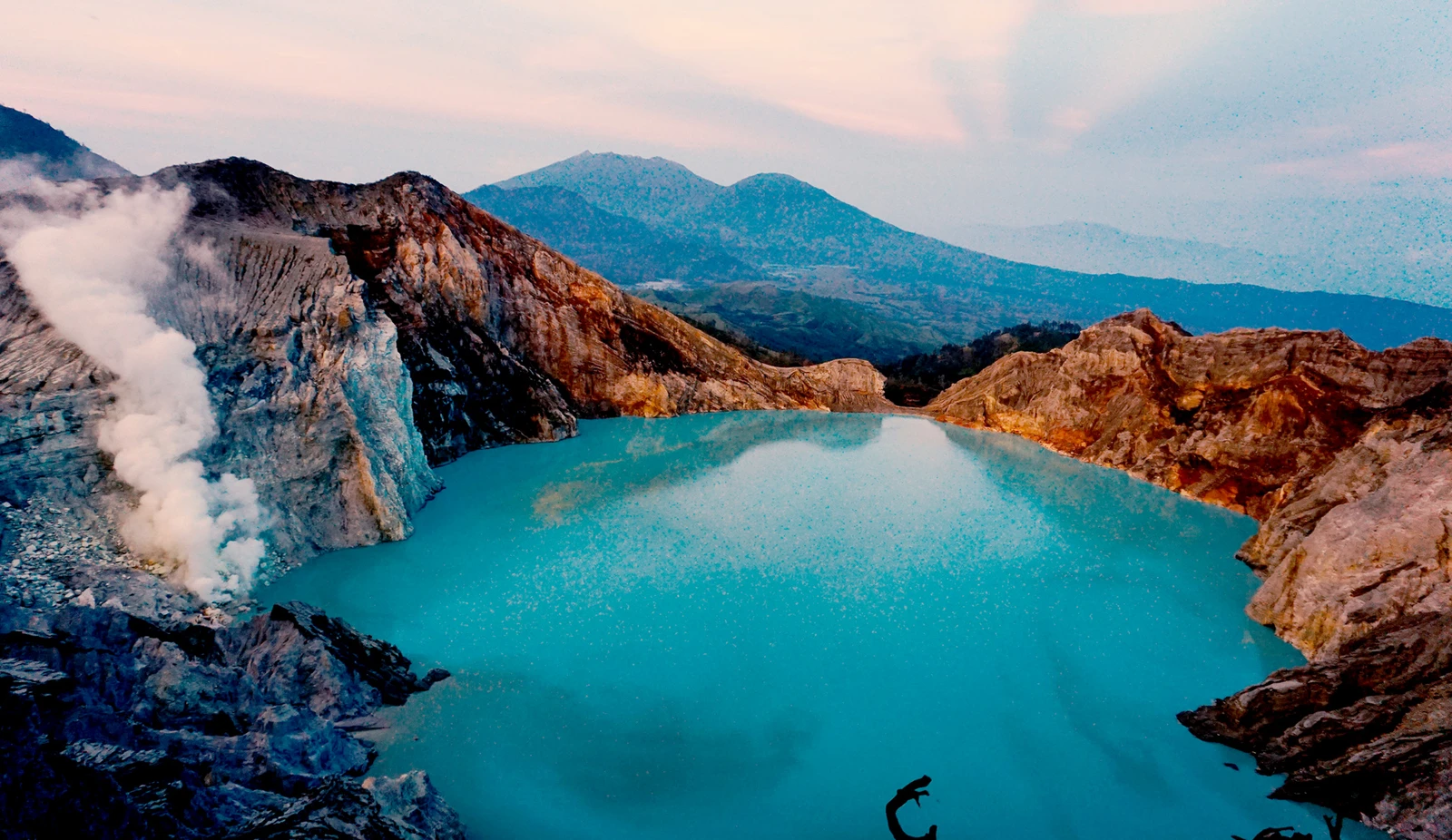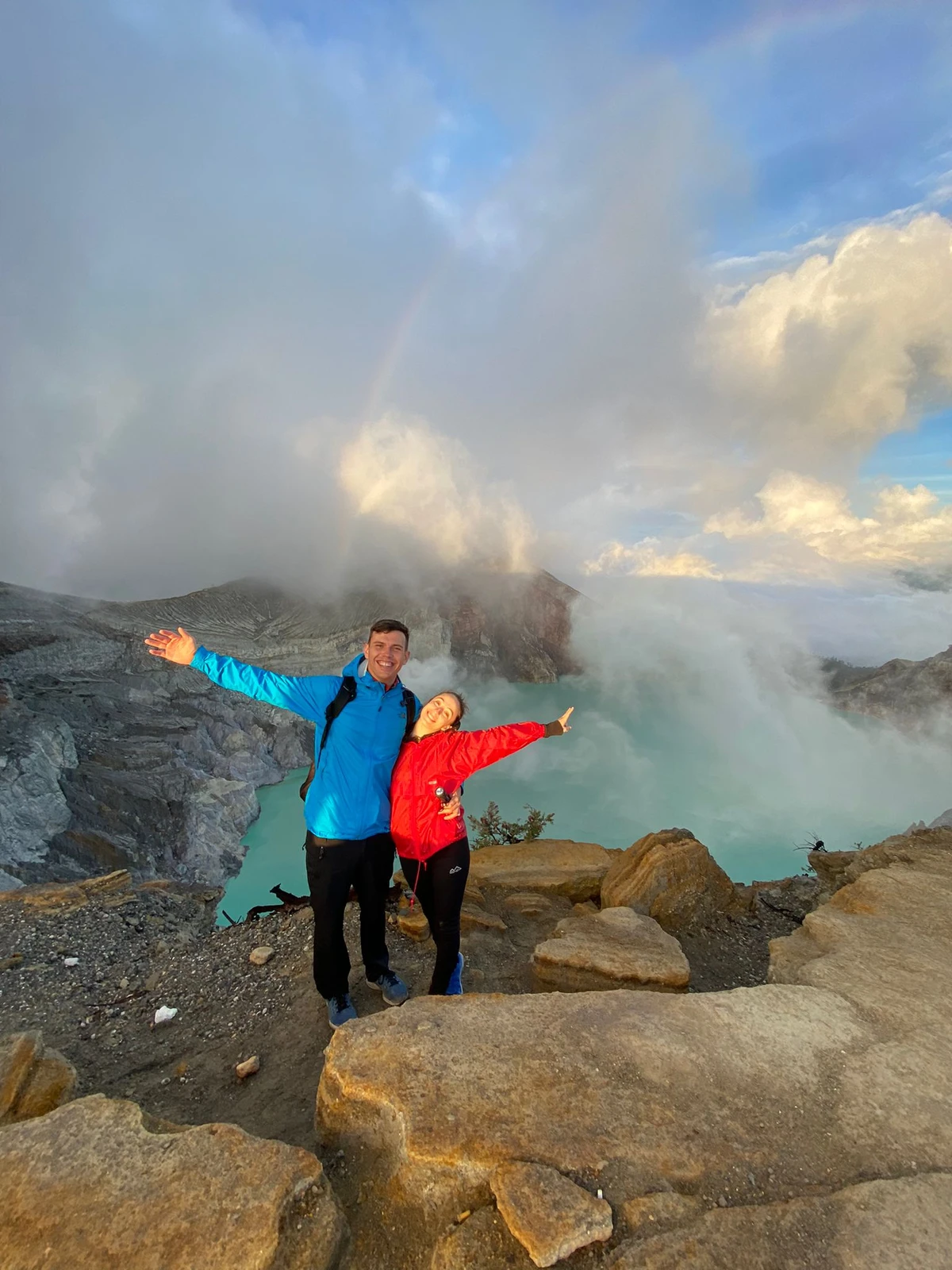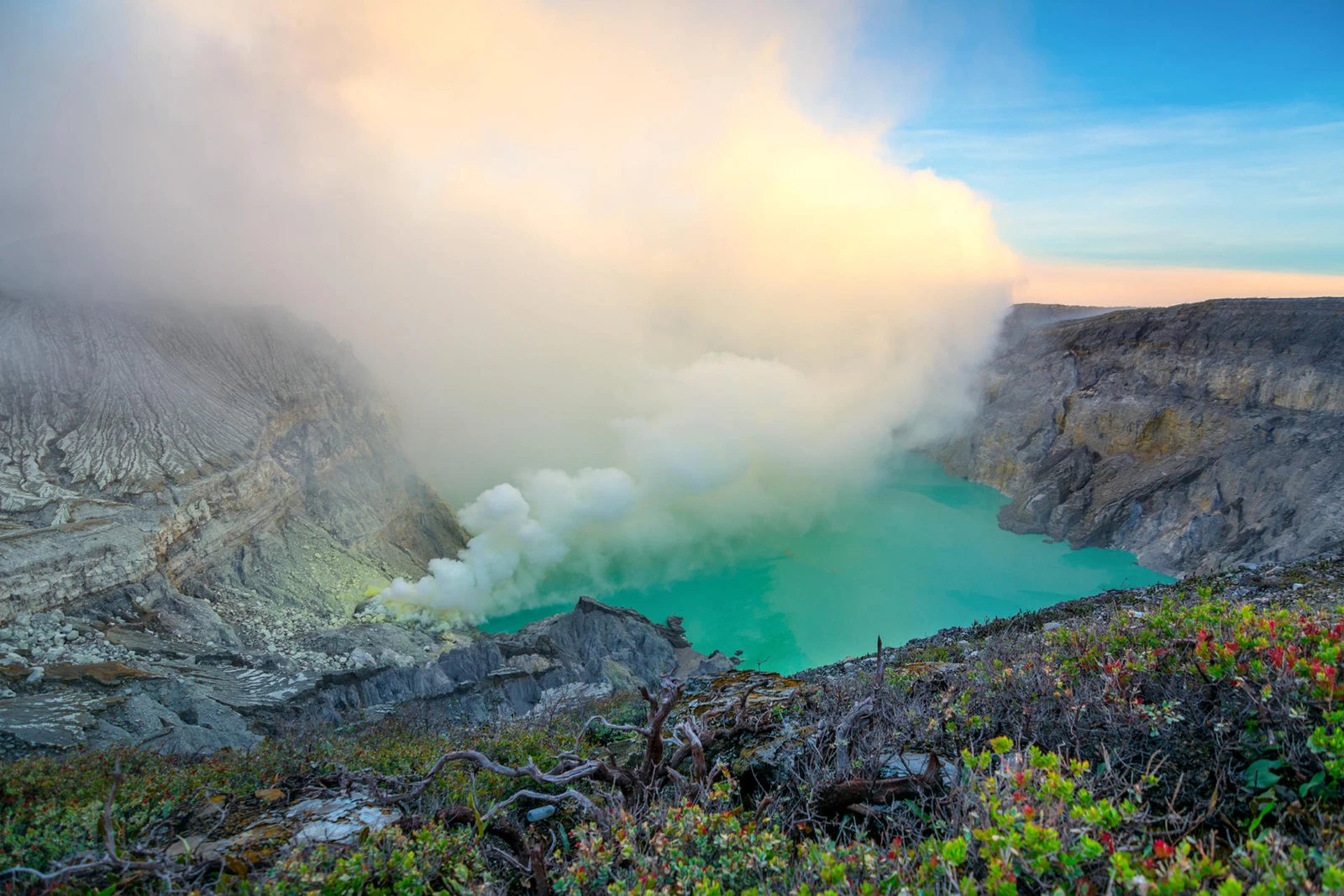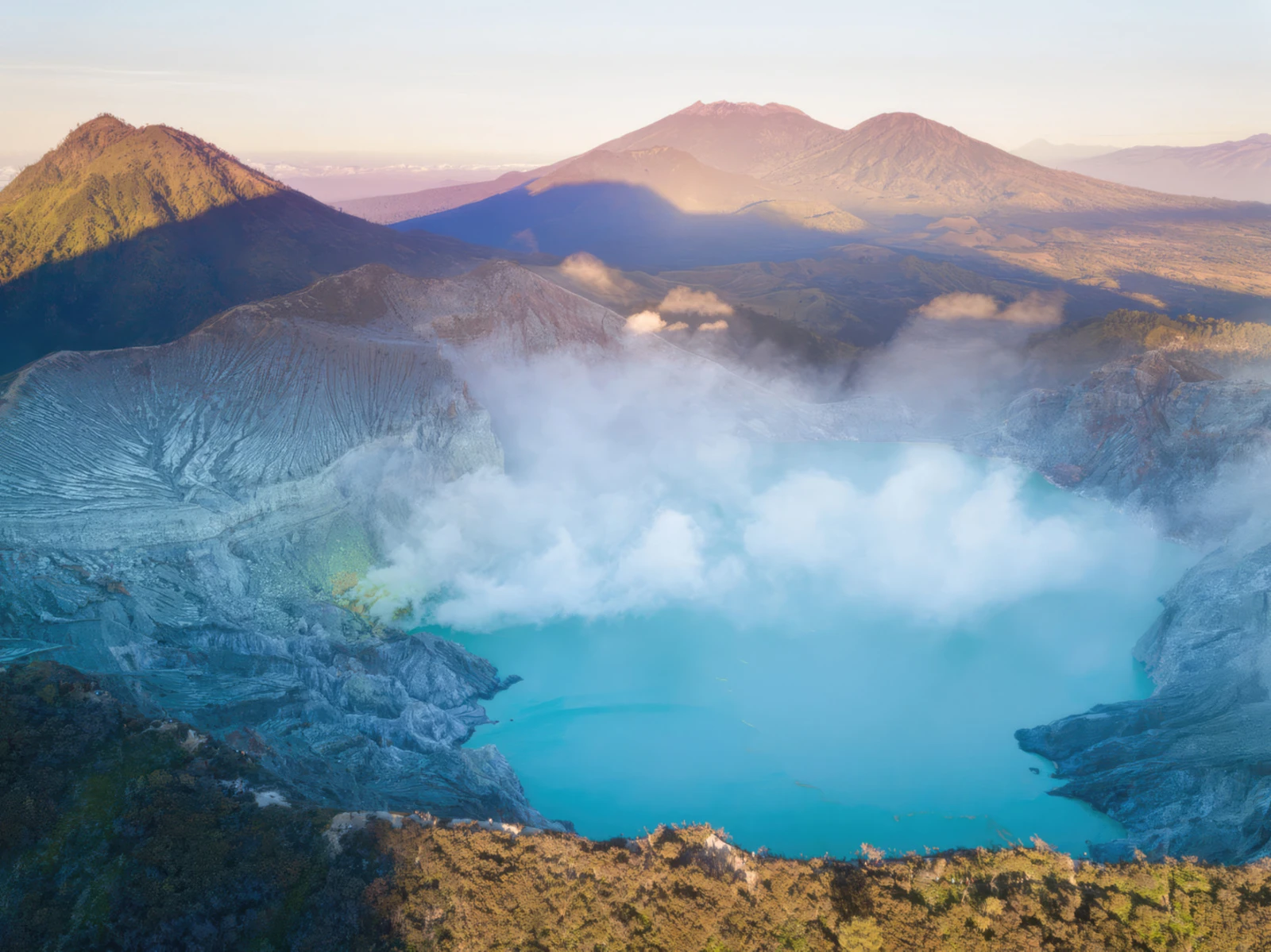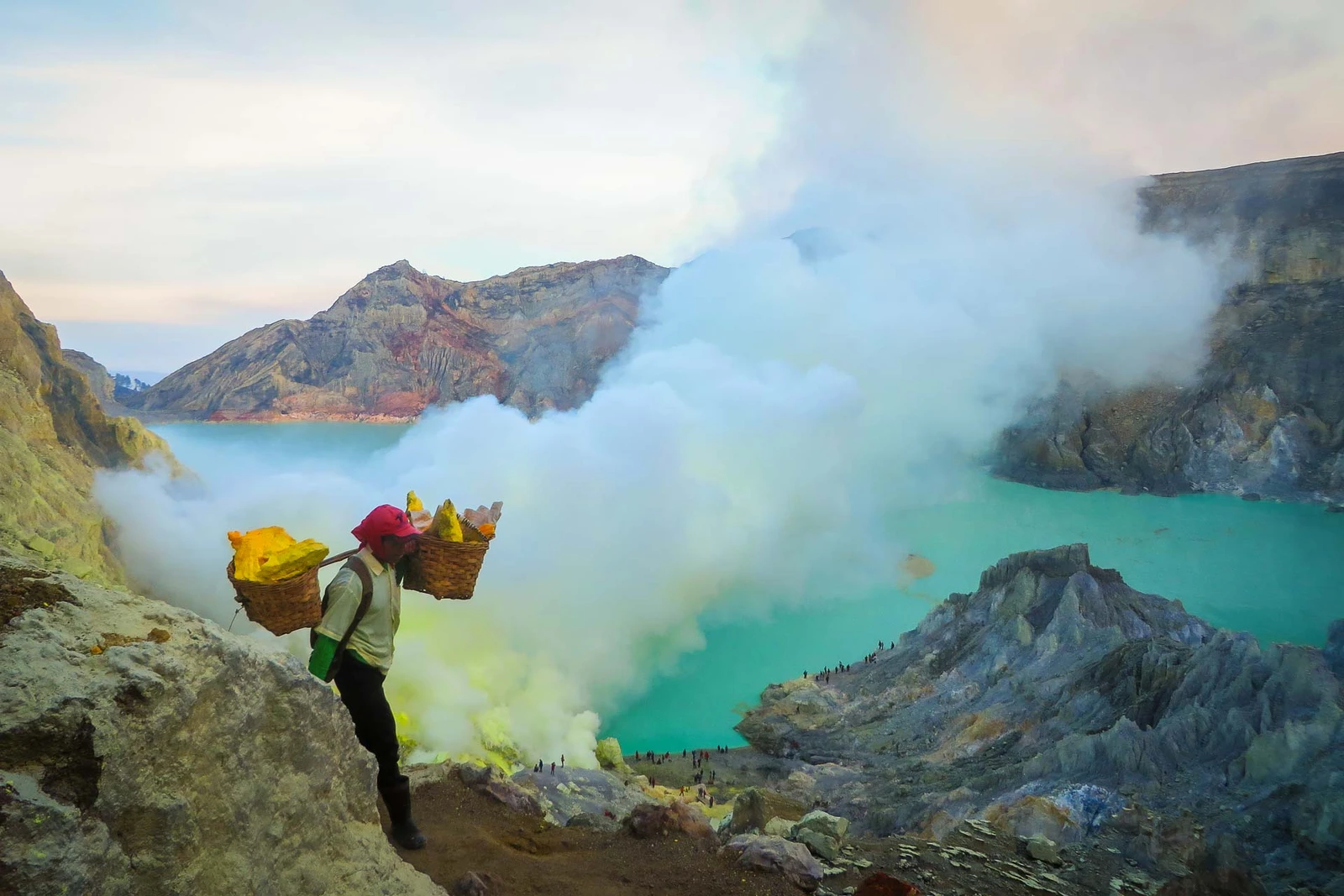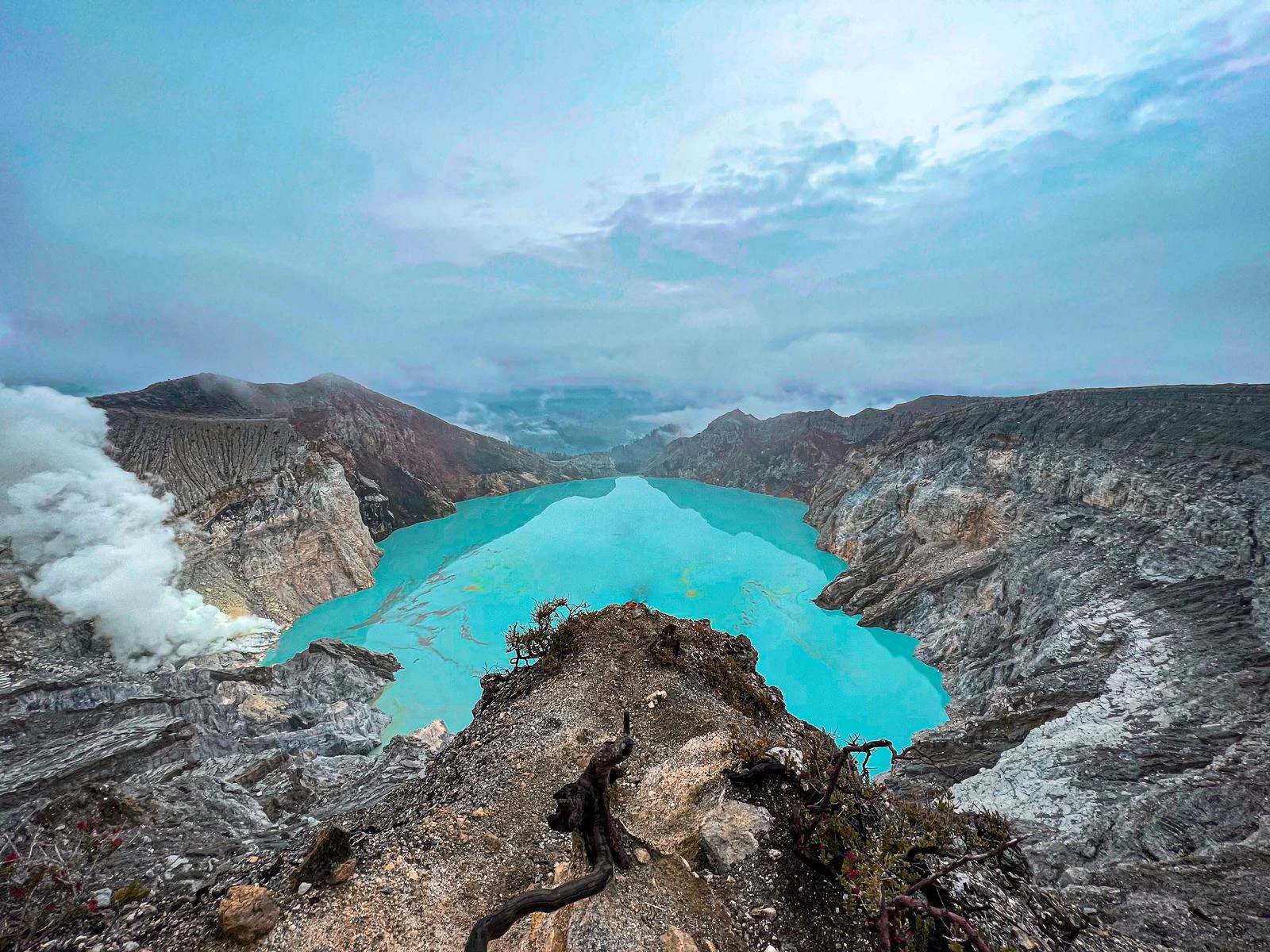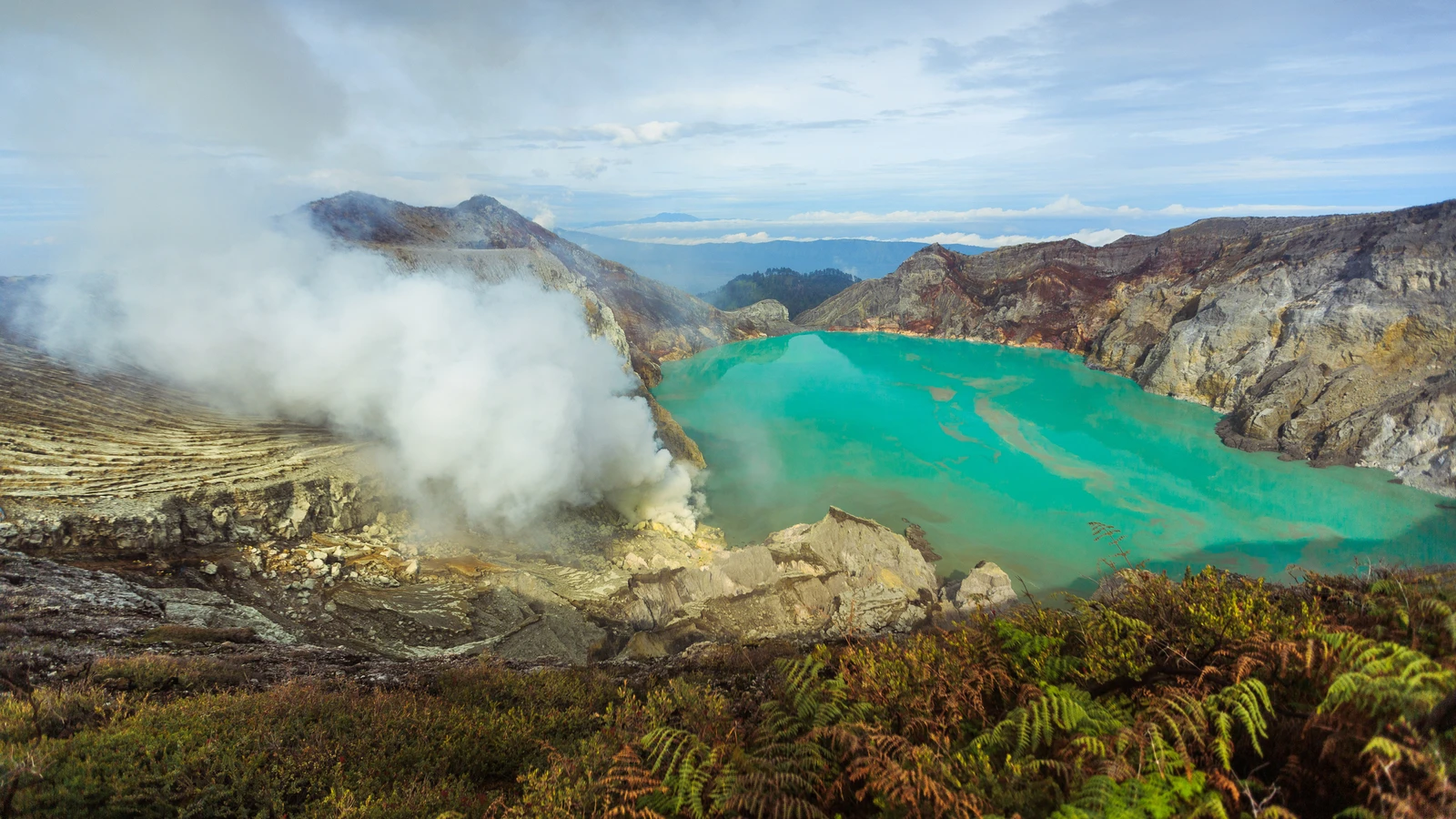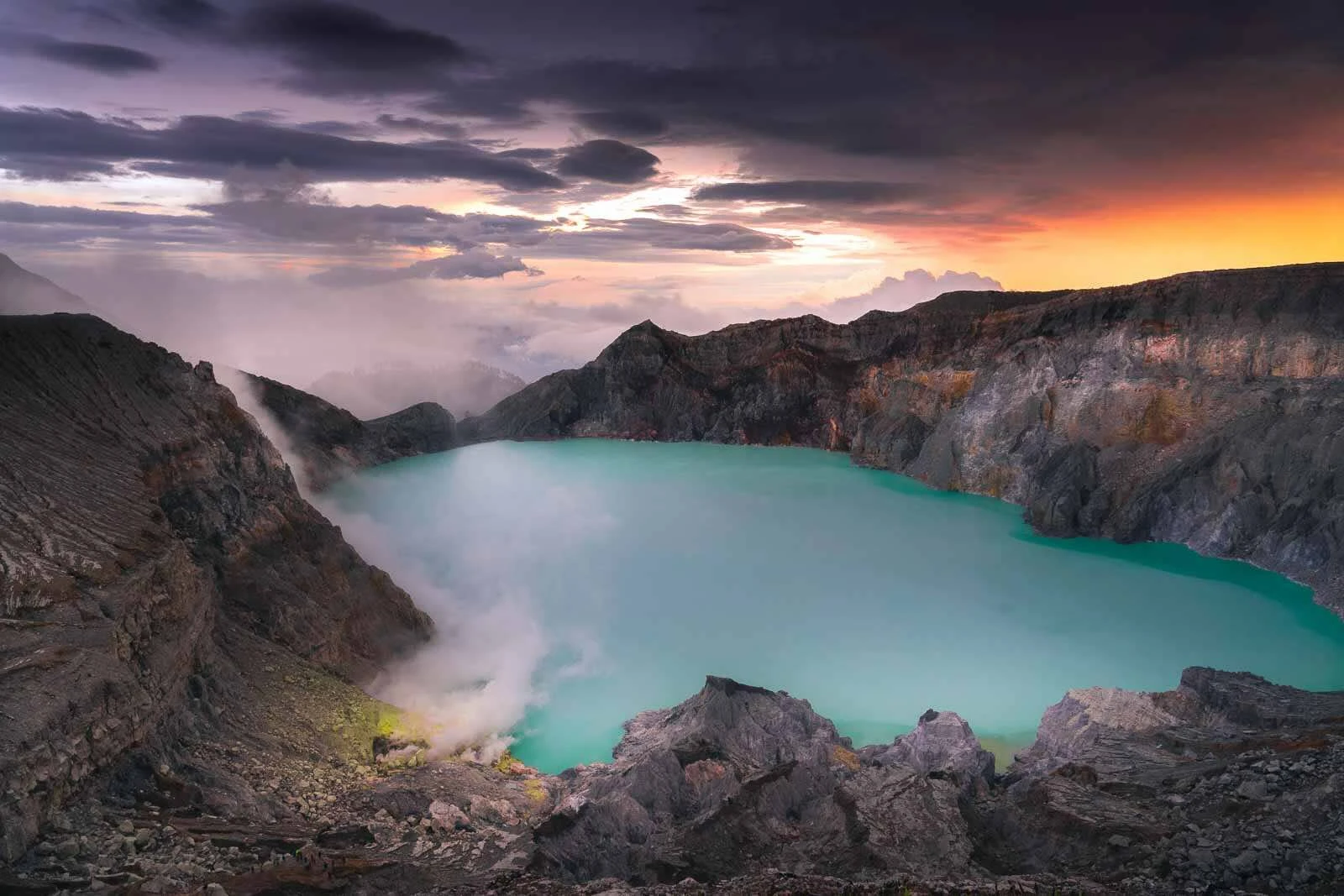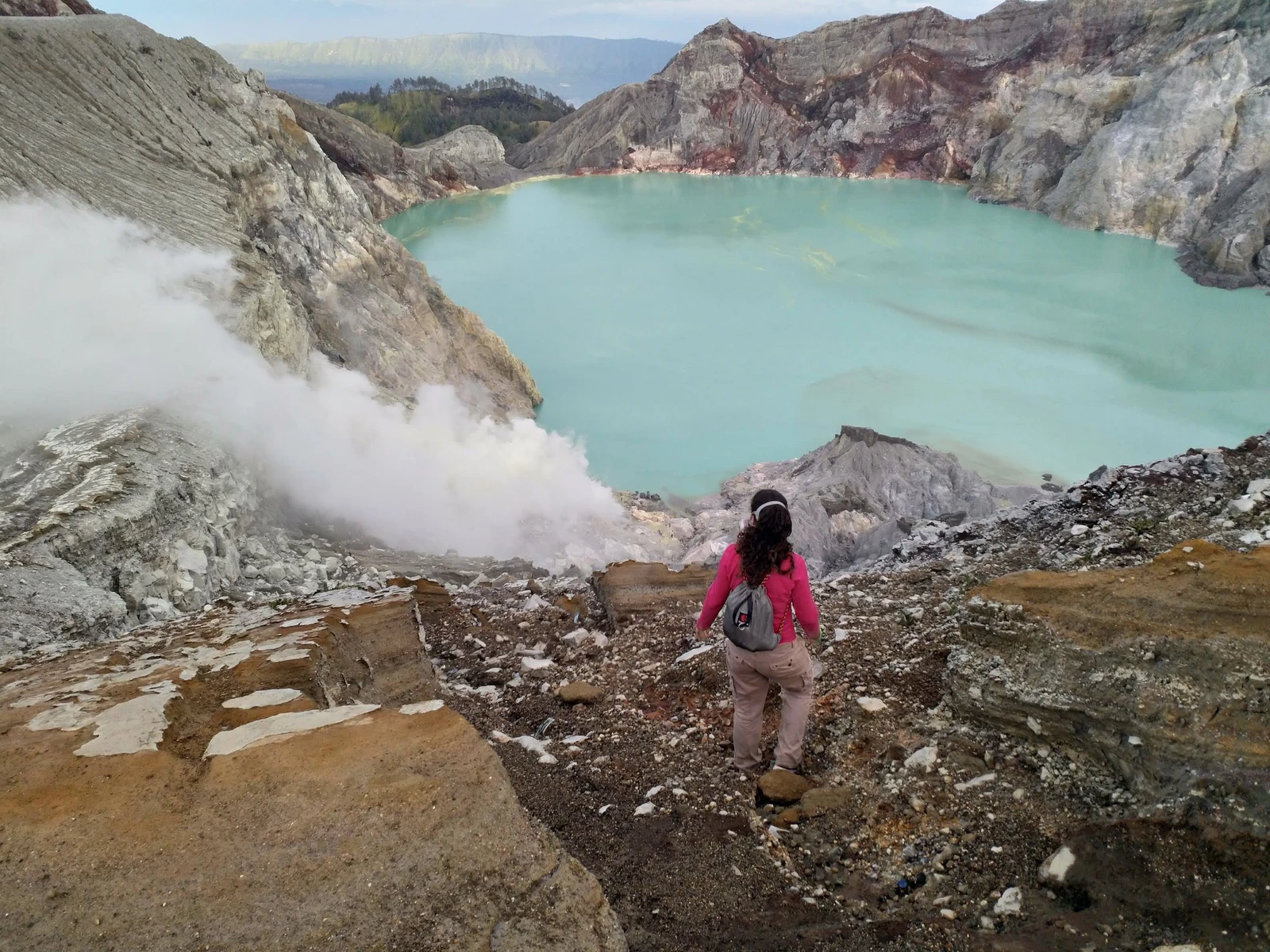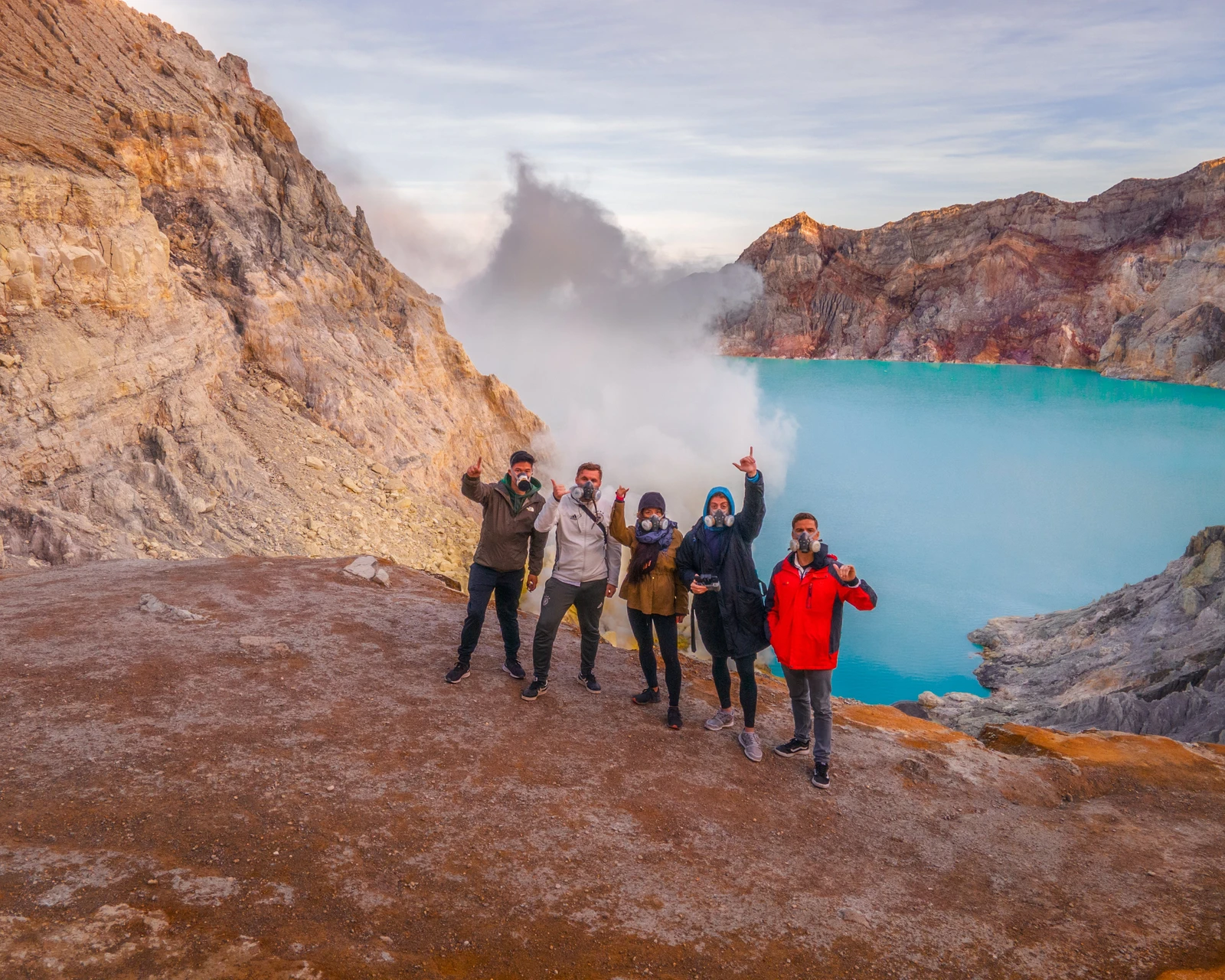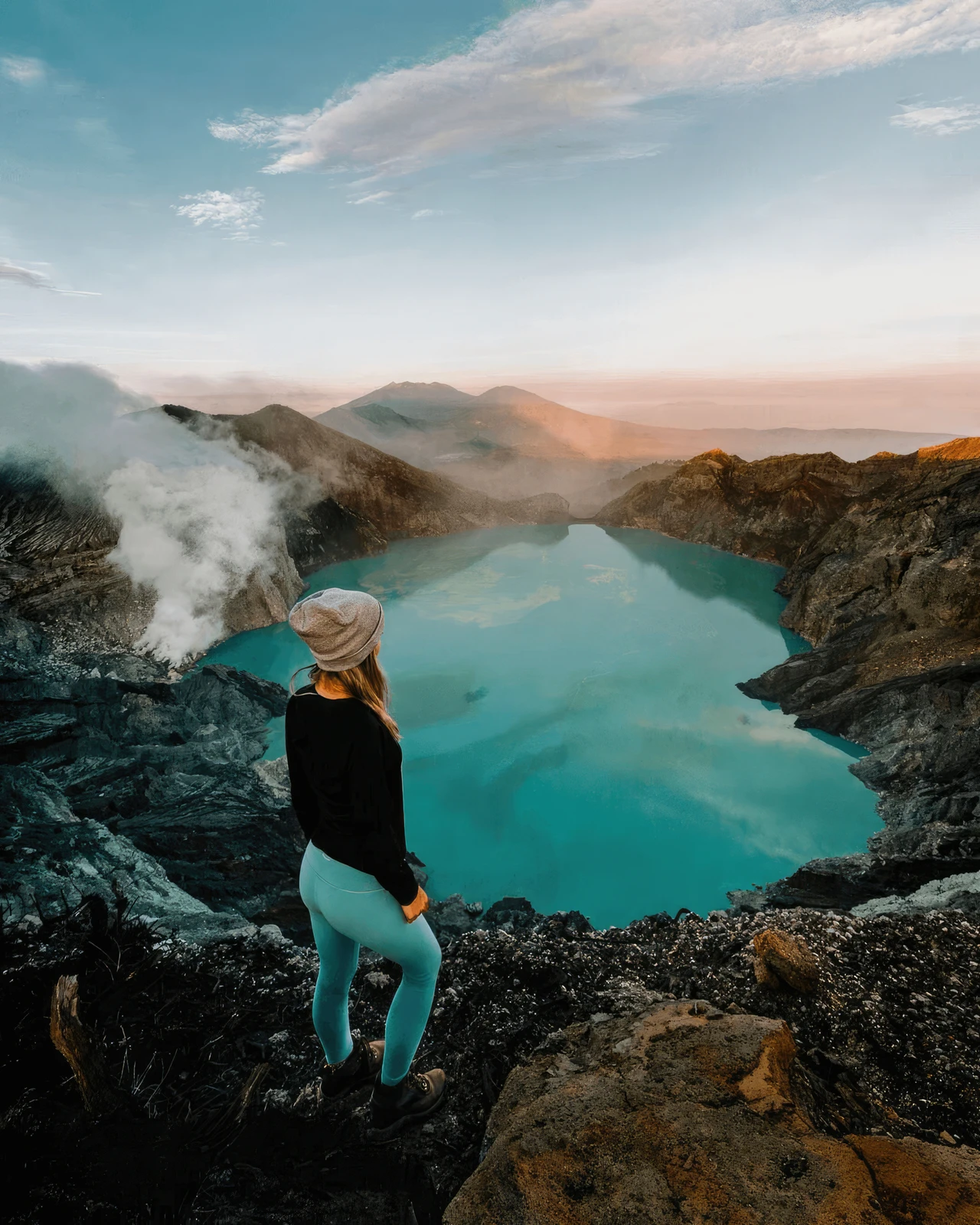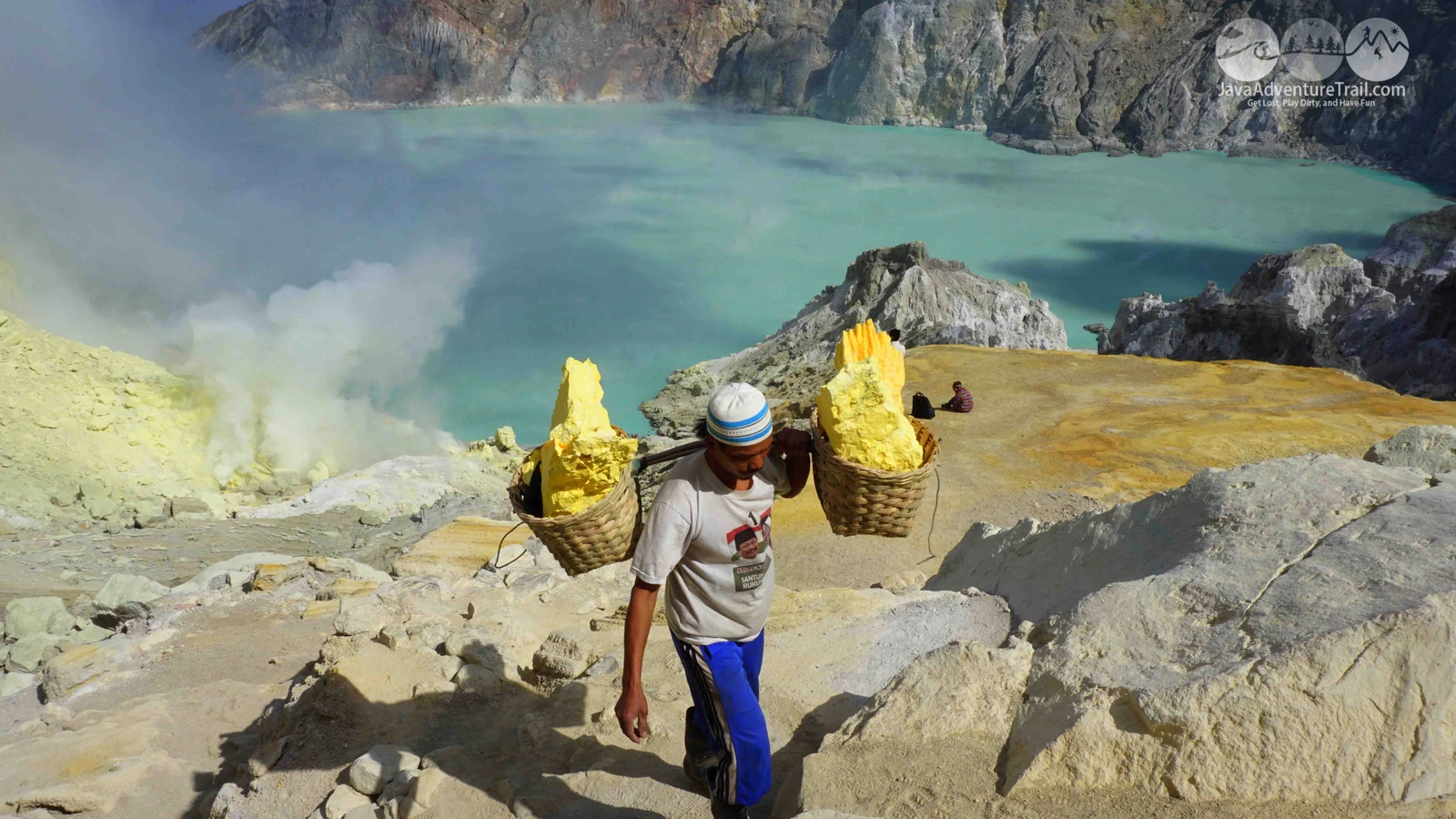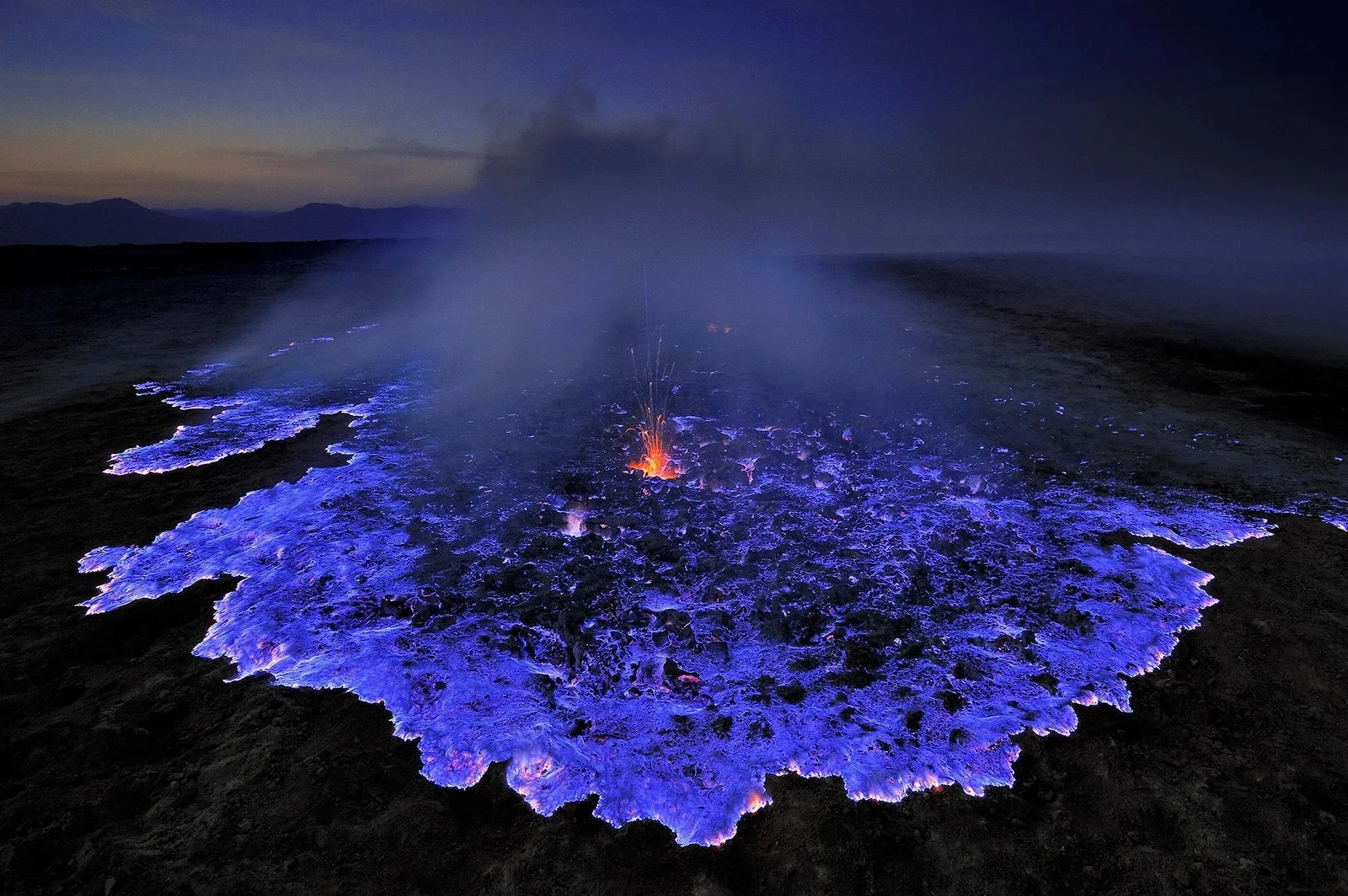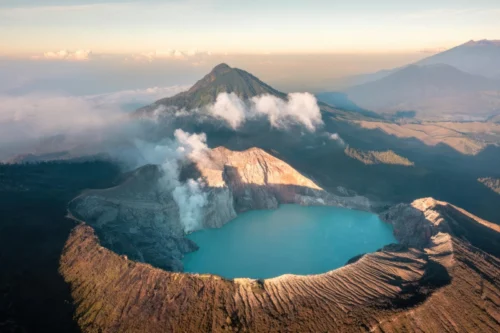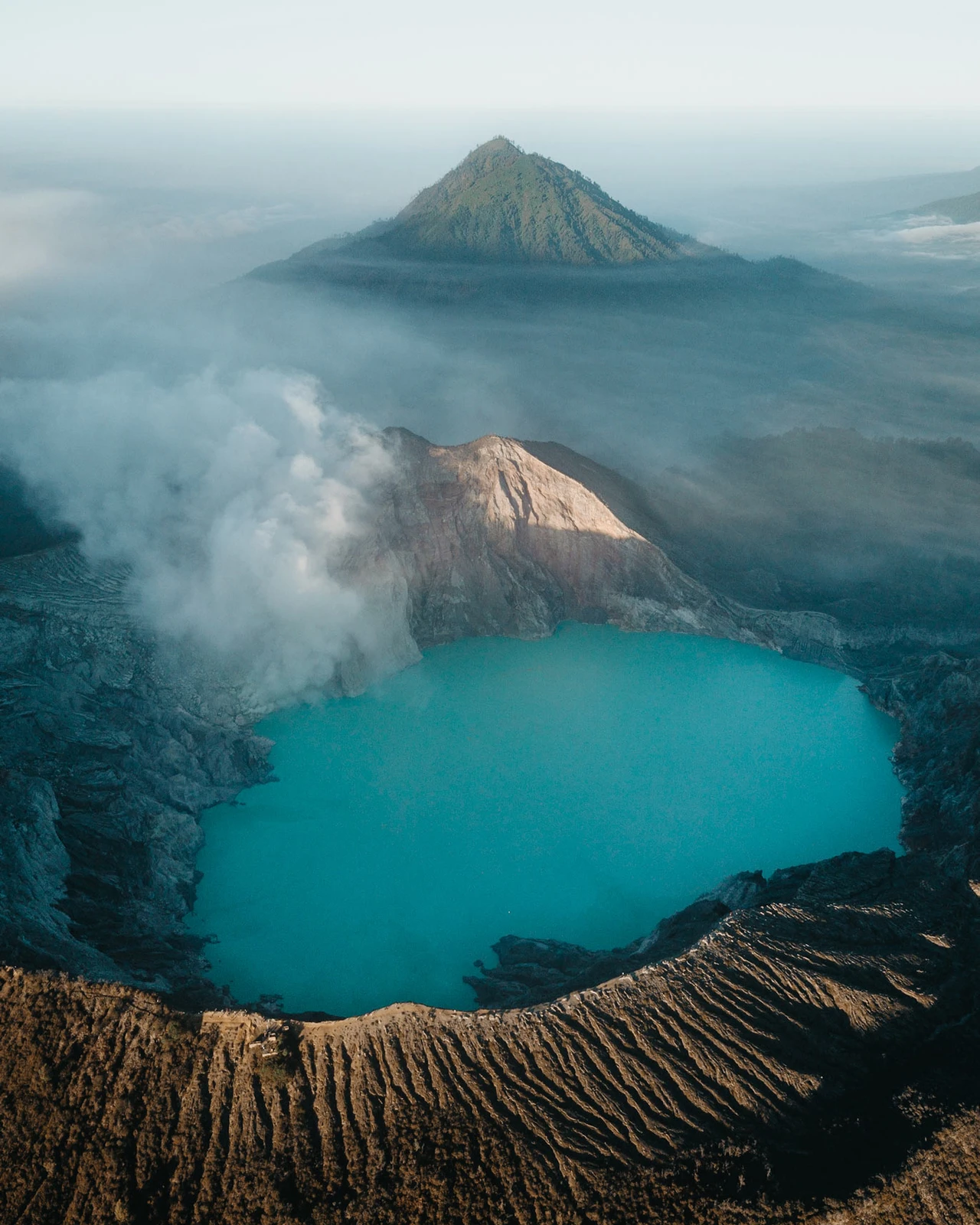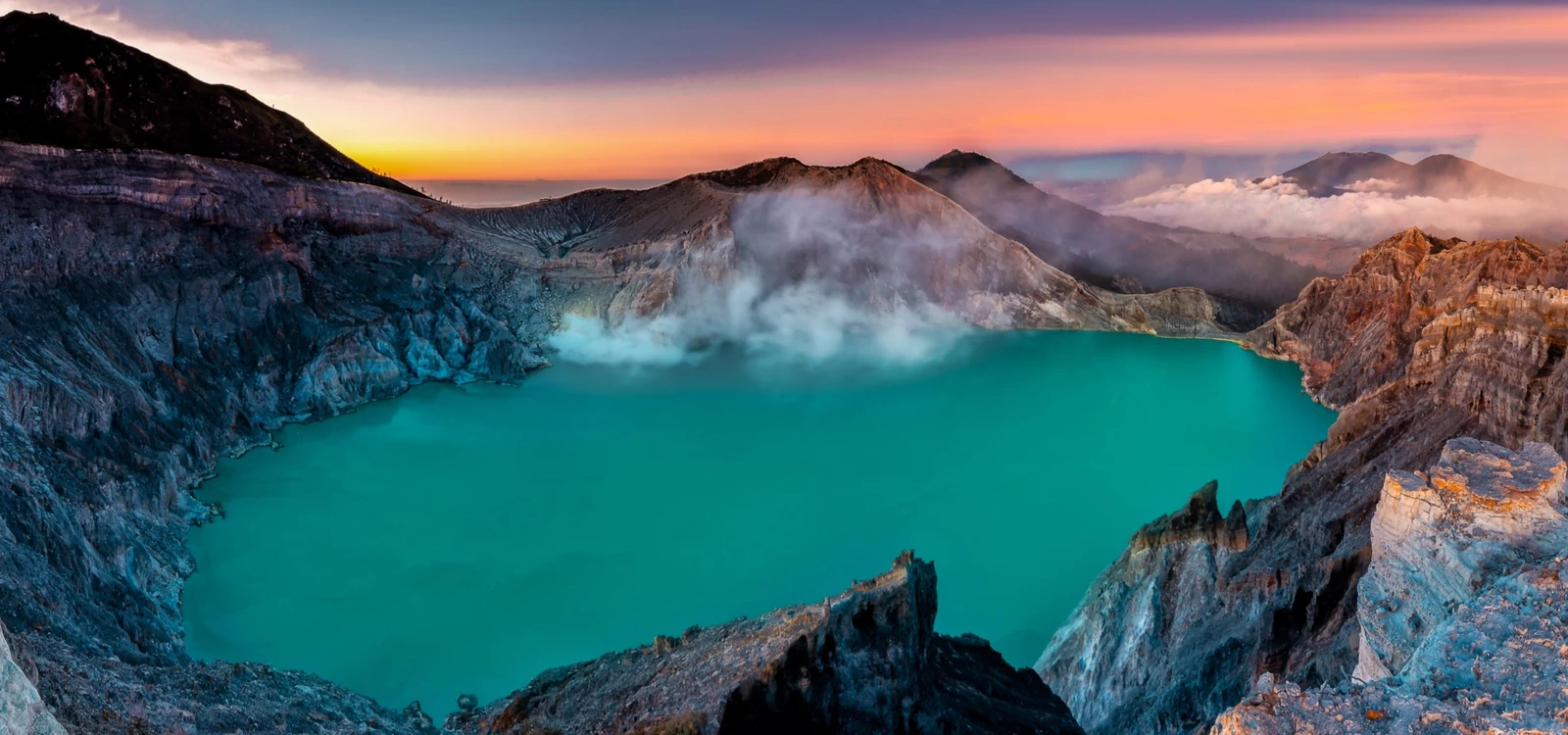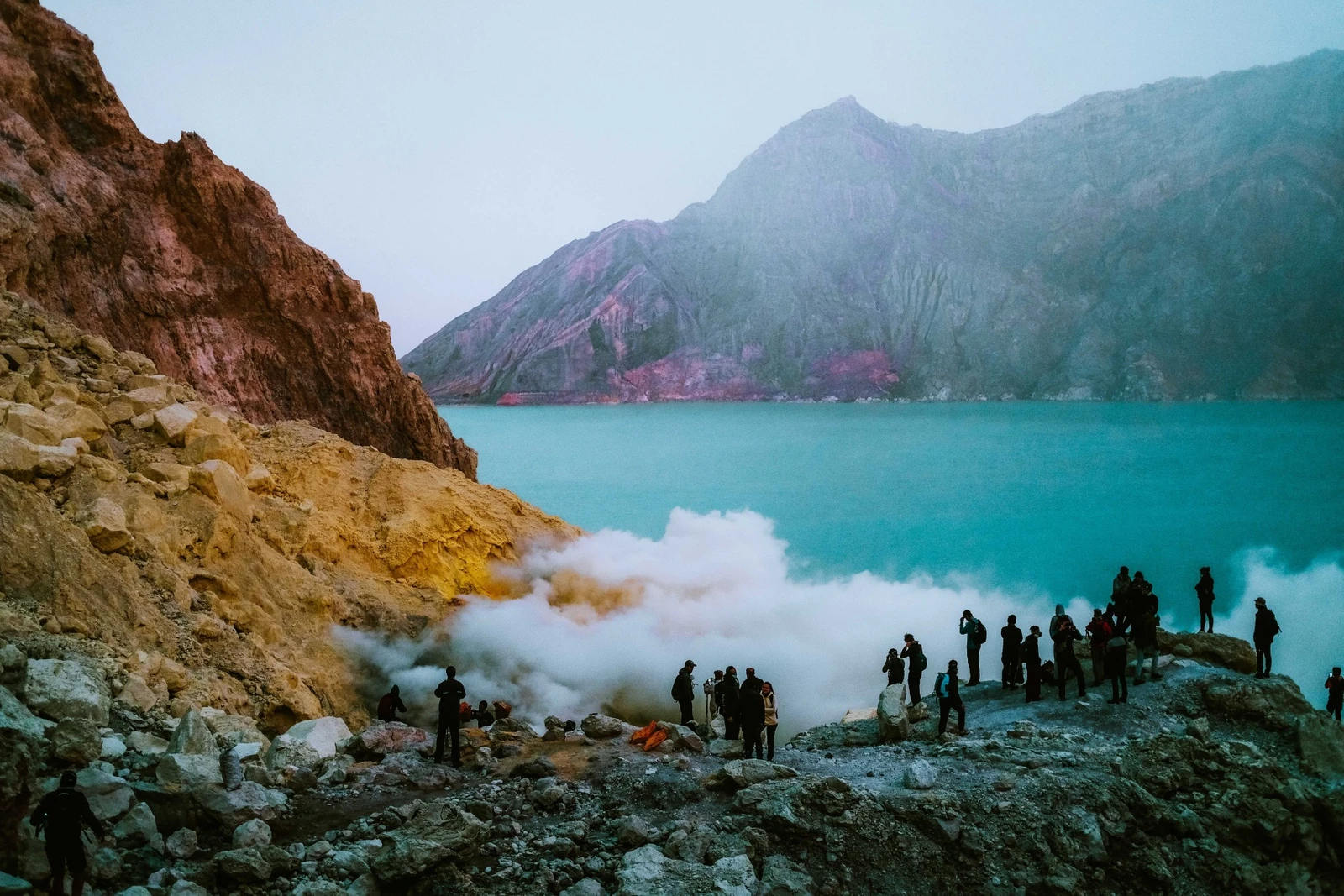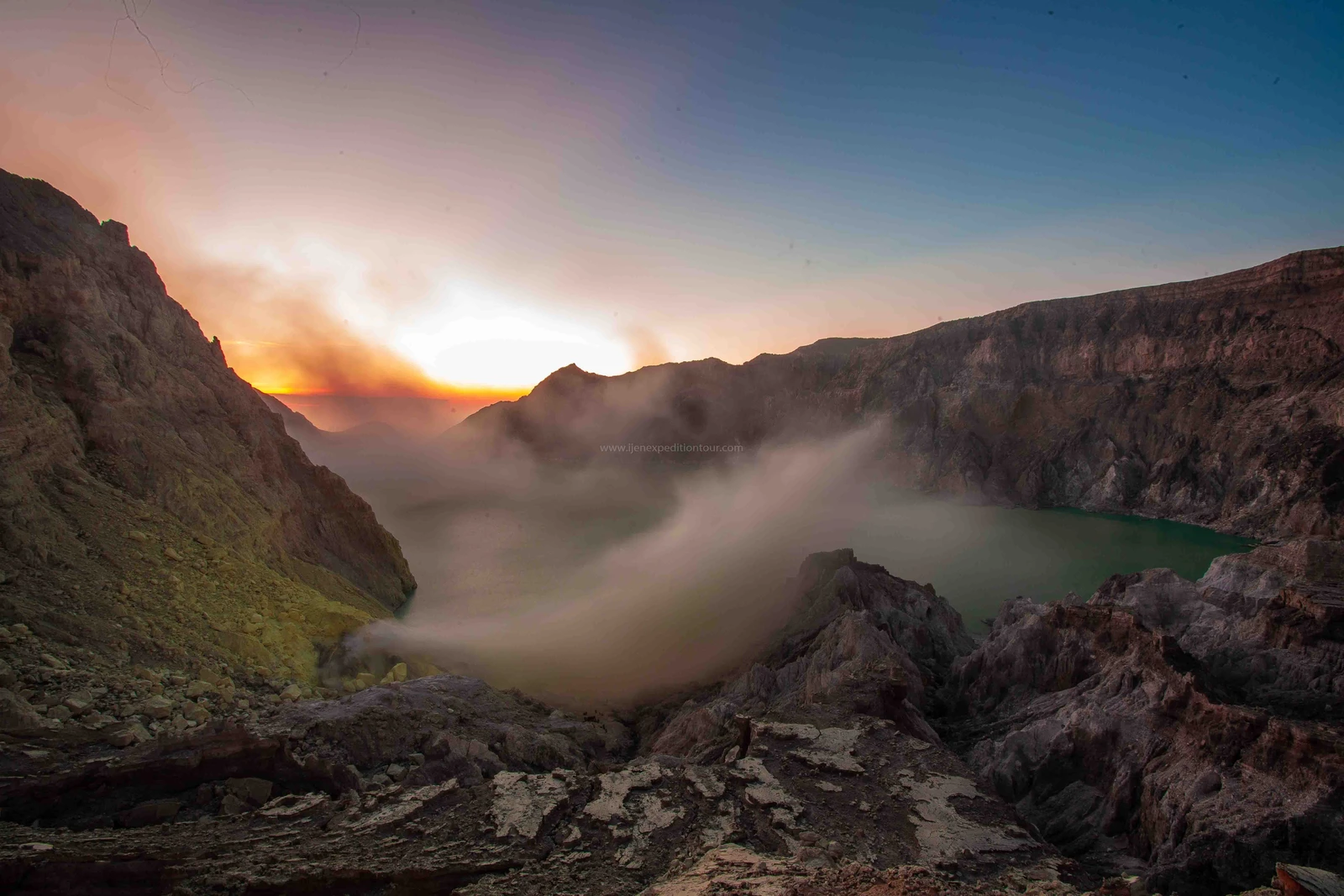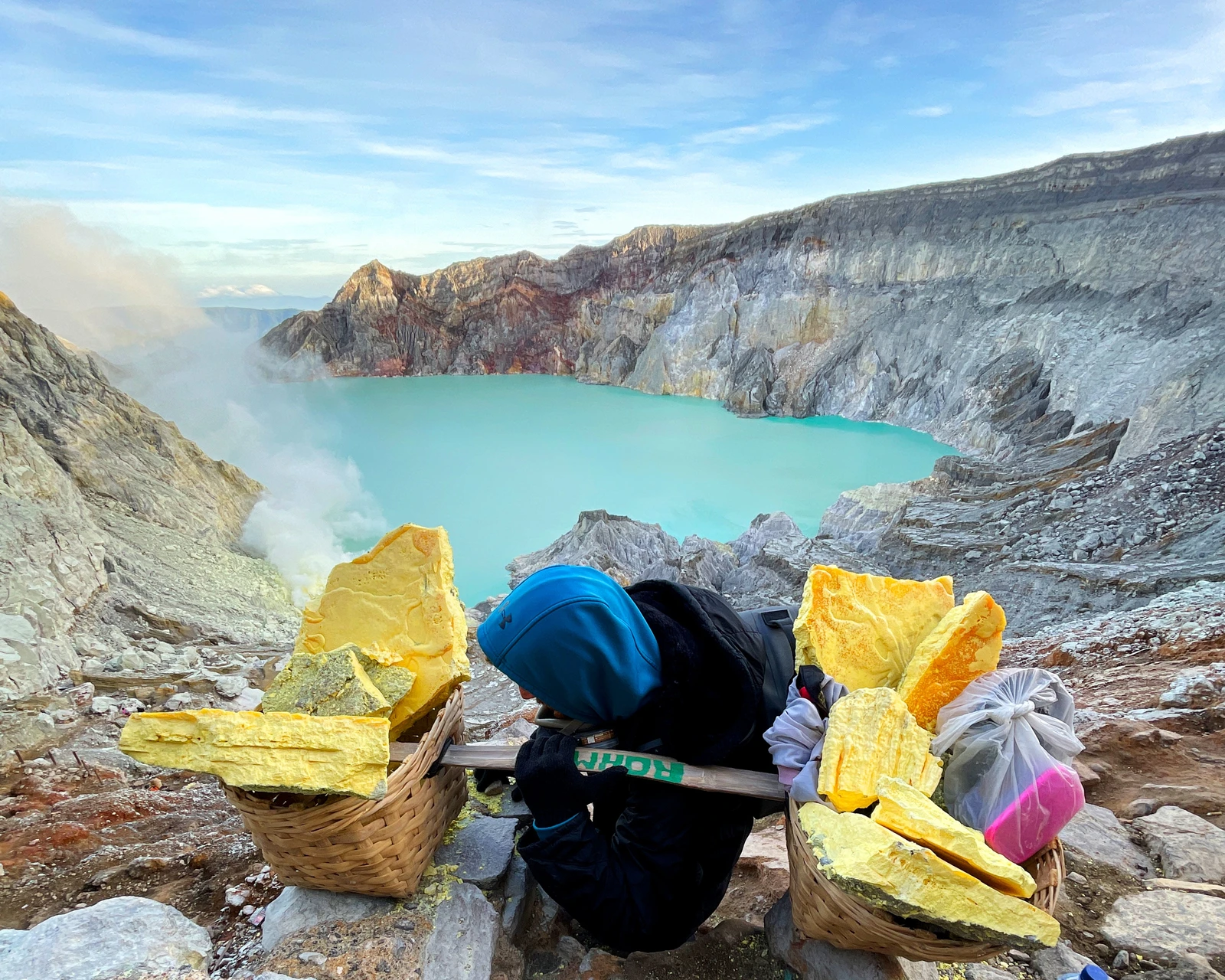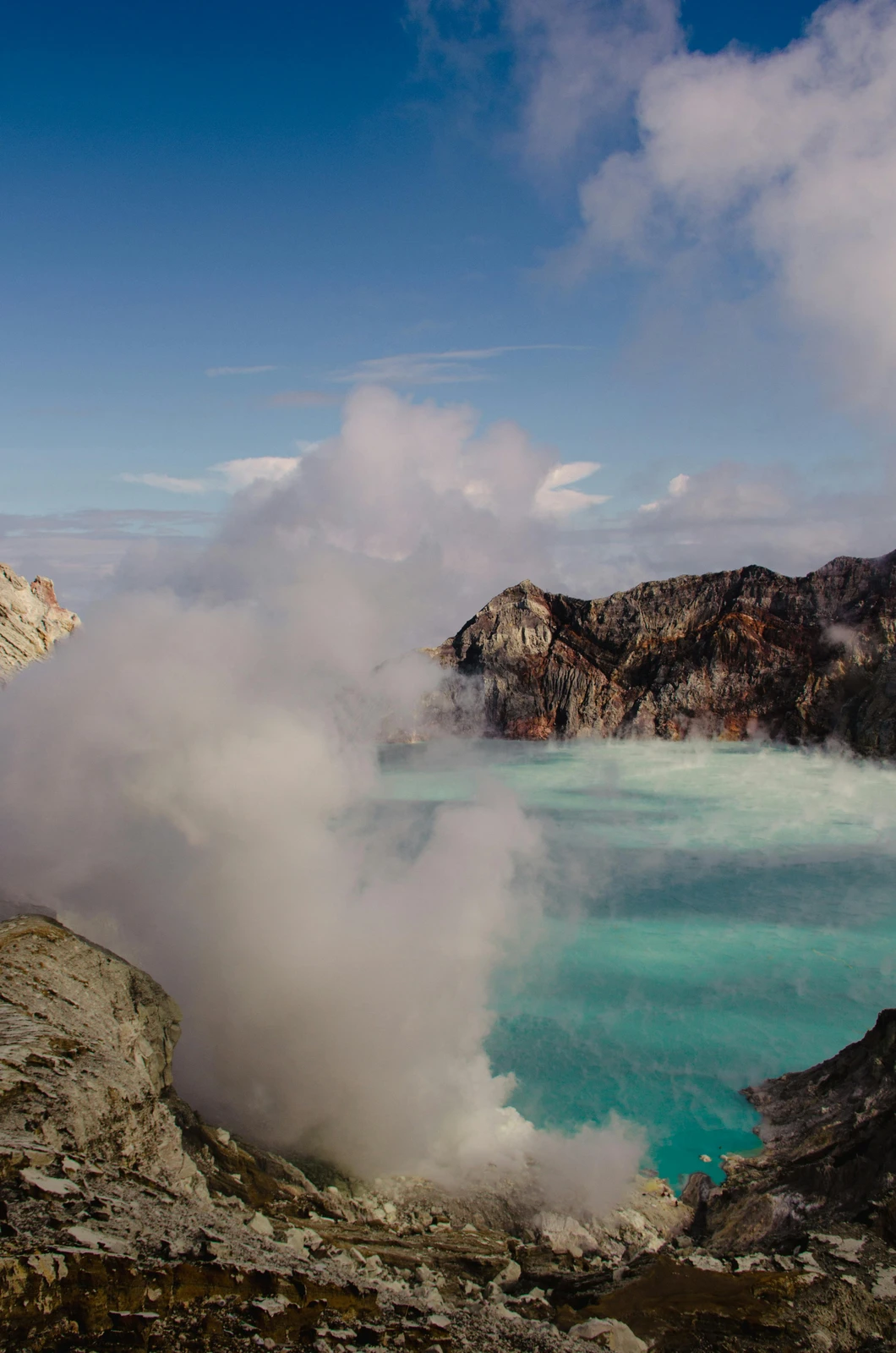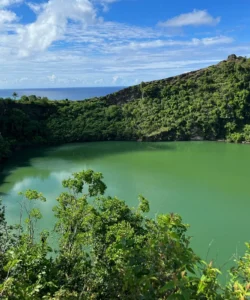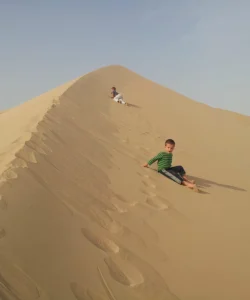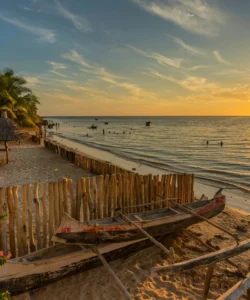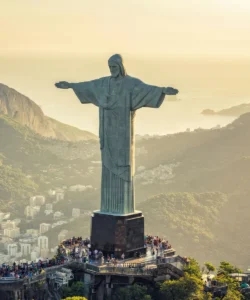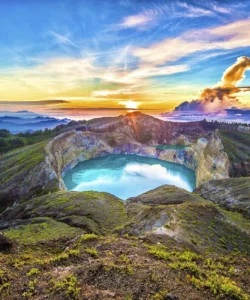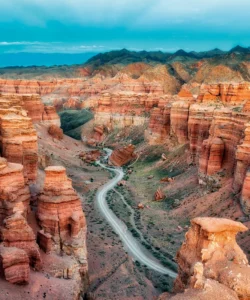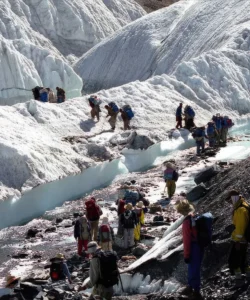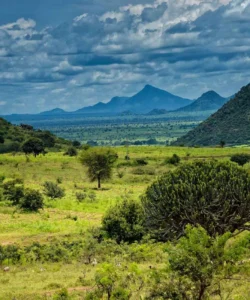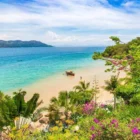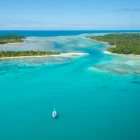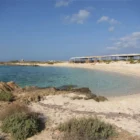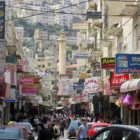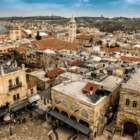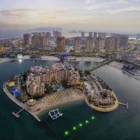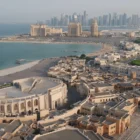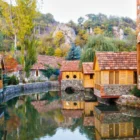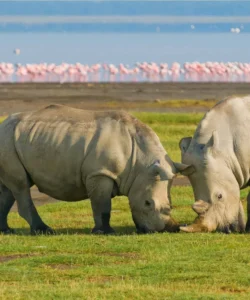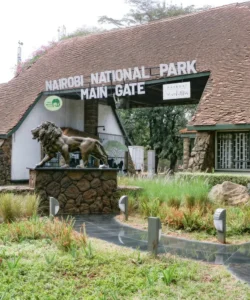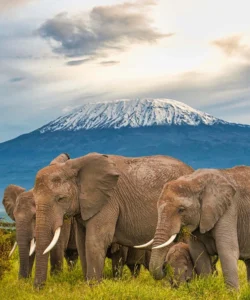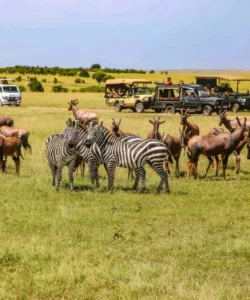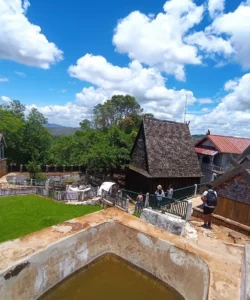Ijen Crater (Kawah Ijen) is one of Indonesia’s most captivating and surreal natural wonders, located on the island of Java. It’s an active volcano famed for two extraordinary phenomena: its mesmerizing electric-blue flames visible only at night, and its turquoise, highly acidic crater lake, considered the largest in the world. The stark beauty and the intense, dangerous sulfur mining operations create a deeply impactful and unforgettable experience.
Listen to an introduction about Ijen Crater

Name: Ijen Crater (Indonesian: Kawah Ijen)
Address: The Ijen volcano complex straddles the border between Banyuwangi Regency and Bondowoso Regency in East Java, Indonesia. The main access point for hikers is the Paltuding Post (Pos Paltuding), which is the starting point for the ascent to the crater.
How to Get There:
Accessing Ijen Crater typically involves flying into an East Java airport, or coming by ferry from Bali, then land transport to the base of the volcano.
- By Air to East Java:
- Juanda International Airport (SUB) in Surabaya: About a 6-8 hour drive to Banyuwangi or Bondowoso.
- Abdul Rachman Saleh Airport (MLG) in Malang: Similar travel time to Banyuwangi/Bondowoso.
- Blimbingsari Airport (BWX) in Banyuwangi: This is the closest airport to Ijen. There are direct flights from Jakarta (CGK) and Surabaya (SUB). From Banyuwangi Airport, it’s about a 1.5 – 2 hour drive to Paltuding Post.
- From Bali (Most Common for International Tourists):
- Bus/Taxi/Private Car to Gilimanuk Ferry Terminal (West Bali): Take transport from your location in Bali to Gilimanuk.
- Ferry to Ketapang, Banyuwangi: From Gilimanuk, take a public ferry across the Bali Strait to Ketapang Port in Banyuwangi, East Java (approx. 45 minutes).
- From Ketapang Port to Paltuding Post: From Ketapang, you’ll need to hire a private car/taxi or an ojek (motorcycle taxi) to Paltuding Post (approx. 1.5 – 2 hours). This is usually arranged as part of a tour package or independently by the traveler.
- From Mount Bromo (Combined Tour): Many travelers combine Ijen with Mount Bromo. Tour operators offer direct transfers from the Bromo area (e.g., Cemoro Lawang or Malang) to Banyuwangi/Bondowoso, usually with an overnight stay before the Ijen hike.
- From Paltuding Post to Crater Rim/Crater Floor:
- Hike: The hike from Paltuding Post to the crater rim is about 3-3.5 km (1.5-2 hours) on a well-defined but challenging uphill path.
- Descent to Blue Fire: To witness the blue fire, you need to descend a steep, rocky, and often slippery path (another 800m – 1 km, 30-45 minutes descent) into the crater floor. This part is difficult and potentially dangerous, especially in the dark.
- Sulphur Porter “Taxis”: Some local sulfur miners offer to pull visitors up or down the steep paths on modified trolleys for a fee, a physically demanding service.
- Mandatory Requirements: A gas mask is essential and often mandatory, especially if descending into the crater, due to strong, toxic sulfur fumes. Flashlights or headlamps are also crucial for the pre-dawn hike. Guides are highly recommended and sometimes mandatory, especially for the crater descent.
- Park Entrance Fee: There is a national park entrance fee.
Landscape and Architecture:
Ijen Crater’s landscape is a raw, powerful expression of volcanic geology, creating a surreal and often intimidating environment. Its “architecture” is almost entirely natural, shaped by extreme volcanic and chemical processes.
- Stratovolcano Complex: Kawah Ijen is part of a larger Ijen volcano complex, a group of composite volcanoes within a vast caldera. The highest point of this complex is Gunung Merapi (not to be confused with the more famous Mount Merapi in Central Java).
- Turquoise Acidic Crater Lake: At the heart of Ijen is its striking one-kilometer-wide (0.62 mi) turquoise-colored crater lake, known as Kawah Ijen. This is the world’s largest and most acidic crater lake, with a pH level as low as 0.13-0.5. Its vibrant color is due to the high concentration of dissolved sulfuric acid and other volcanic minerals. The lake is toxic and dangerous to touch.
- Active Sulfur Fumaroles and Blue Fire: The most unique natural “architecture” is created by the sulfuric gases escaping from fissures (fumaroles) within the crater floor. These gases, superheated to over 360°C and sometimes up to 600°C, ignite upon contact with oxygen, producing the famous electric-blue flames (often mistakenly called “blue lava”) that cascade down the rocks at night. Some of these gases condense into liquid sulfur, which drips down in bright red rivulets before solidifying into yellow crystals.
- Sulfur Deposits and Mining Operation: The crater floor is covered in distinctive bright yellow sulfur deposits. This is the site of a traditional and extremely dangerous sulfur mining operation, where local miners manually break off chunks of solidified sulfur and carry heavy loads (75-90 kg) up the steep crater walls and down the mountain. The rudimentary pipes and tools used by miners are the only visible “man-made” structures within the active crater.
- Rugged Volcanic Terrain: The slopes leading to and within the crater are steep, rocky, and often loose, characterized by volcanic ash, hardened lava flows, and exposed rock faces.
- Surrounding Greenery (outside crater): While the immediate crater area is barren, the lower slopes of the Ijen complex and the surrounding areas (especially on the drive from Bondowoso) are surprisingly green with coffee and clove plantations, providing a stark contrast to the starkness of the crater.
- UNESCO Global Geopark: Ijen Geopark became part of UNESCO Global Geoparks in 2023, recognizing its unique geological, biological, and cultural sites.
What Makes It Famous:
- The Blue Fire Phenomenon: Ijen Crater is one of only a few places on Earth where the electric-blue flames caused by ignited sulfuric gases are visible, and it’s the only accessible one for tourists. Witnessing this surreal glow in the pre-dawn darkness is its primary and most unique draw.
- World’s Largest Acidic Crater Lake: The vast, stunning turquoise lake in the crater is the largest highly acidic lake in the world, a unique and dangerous natural wonder.
- Sulfur Mining Operation: The extremely arduous and hazardous work of the traditional sulfur miners, carrying heavy loads of sulfur out of the crater, provides a humbling and often emotional human element to the natural spectacle. It has been featured in documentaries.
- Dramatic Landscape Photography: The combination of blue flames, the turquoise lake, yellow sulfur deposits, and the rugged volcanic terrain creates an incredibly alien and photogenic landscape, especially during the transition from night to sunrise.
- Unique Volcanic Experience: It offers a raw, visceral encounter with an active volcano, distinct from typical scenic overlooks. The sulfuric fumes, the physical challenge, and the otherworldly views create a profound sense of being on another planet.
- Sunrise Views: After witnessing the blue fire, staying for sunrise offers equally breathtaking views of the entire crater, the lake, and the surrounding mountains, often accompanied by shifting mist and colorful skies.
Differences from Some Other Wonders:
- Specific Nocturnal Phenomenon (Blue Fire): While Mount Bromo is famous for its sunrise over a caldera, Ijen’s defining feature is its “blue fire” visible only at night/pre-dawn, requiring a very early start and a hike in darkness. This specific nocturnal, chemical-combustion phenomenon is unique.
- Extremely Acidic Lake and its Hazards: While other volcanoes have lakes (e.g., Kelimutu’s multi-colored lakes, Rinjani’s Segara Anak), Ijen’s lake is famously the largest and most acidic in the world, posing direct hazards if touched or approached too closely, and impacting the surrounding environment with “bitter water” rivers. This extreme chemical environment is unique.
- Active Human Mining Activity: The presence of a large-scale, traditional, and dangerous sulfur mining operation within the active crater, where miners work directly amidst the toxic fumes, creates a powerful human story and a stark contrast between natural beauty and human struggle, which is largely absent in other volcanic tourist sites.
- Descent into the Crater (for the Blue Fire): To get the best view of the blue fire, visitors often descend into the crater, a treacherous path unique to Ijen, whereas most volcanic viewpoints are from the rim (e.g., Bromo, Rinjani).
- Sulfur Fume Intensity and Mask Requirement: The extremely strong and toxic sulfur fumes necessitate mandatory gas masks for visitors, highlighting the active and hazardous nature of the site in a way that is far more pronounced than at other accessible volcanoes.
- “Dark Tourism” Element: The combination of stunning natural beauty with the dangerous working conditions of the miners gives Ijen a strong element of “dark tourism,” where visitors confront difficult realities alongside natural wonder.
